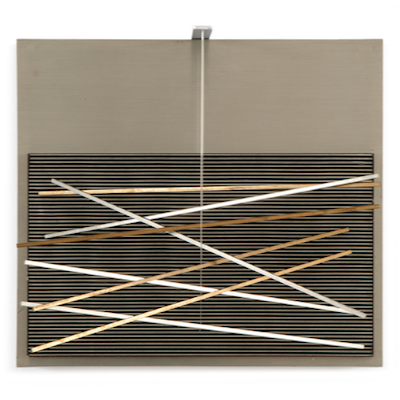
Details
Artist
Styles
// Purple Long by Victor Vasarely, created in 1977, is a captivating silkscreen print that embodies Vasarely’s expertise in Op Art. This piece features two spherical, honeycomb-like forms in shades of purple, pink, and red, positioned vertically on a textured, geometric background of smaller hexagonal shapes. The gradient colors and intricate patterning create a strong optical illusion, making the spheres appear as if they are floating and bulging out from the flat surface. Vasarely’s skillful use of color and geometric repetition manipulates depth and perception, drawing viewers into an immersive visual experience. Part of a limited edition of 250, Purple Long is a stunning example of Vasarely’s commitment to exploring dimensionality and movement within static compositions.
Purple long, 1977
form
Medium
Size
109 x 71 cm
- Inches
- Centimeters
Edition
Price
- USD
- EUR
- GBP
Details
Artist
Styles
// Purple Long by Victor Vasarely, created in 1977, is a captivating silkscreen print that embodies Vasarely’s expertise in Op Art. This piece features two spherical, honeycomb-like forms in shades of purple, pink, and red, positioned vertically on a textured, geometric background of smaller hexagonal shapes. The gradient colors and intricate patterning create a strong optical illusion, making the spheres appear as if they are floating and bulging out from the flat surface. Vasarely’s skillful use of color and geometric repetition manipulates depth and perception, drawing viewers into an immersive visual experience. Part of a limited edition of 250, Purple Long is a stunning example of Vasarely’s commitment to exploring dimensionality and movement within static compositions.
- Recently Added
- Price (low-high )
- Price (high-low )
- Year (low-high )
- Year (high-low )
What is kinetic art?
Kinetic art is an international movement that emerged in the 1920s and gained prominence in the 1960s, referring to art that involves both apparent and real motion. It encompasses any medium that includes movement, either relying on actual motion for its effect or being perceived as moving by the viewer. Early examples include canvas paintings designed to create optical illusions of movement. Today, kinetic art often refers to three-dimensional figures and sculptures, such as those operated by machines or those that move naturally. The movement covers a variety of styles and techniques that frequently overlap.






































































